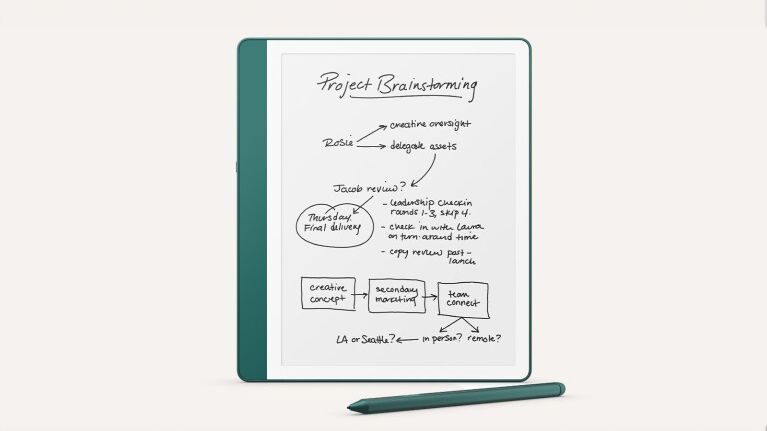The dawn of the e-reader was a glorious moment for me after years of lugging around dozens of pounds of books to sate my bibliophile needs. Amazon’s Kindle line stood out from its early, basic text form onward.
Now, Amazon has augmented its new Kindle Scribe with AI through a couple of very useful and surprisingly intuitive new features. Other companies making e-readers should take note, and conveniently, that’s exactly what the Kindle Scribe and its AI tools are built for.
In particular, while Amazon has marketed the Kindle Scribe as an E Ink notetaking device, the new Active Canvas facet of the e-reader lets you write notes on top of printed text, automatically gliding around and ensuring a sticky placement.
Chickenscratch refined
I’ll be the first to admit that my handwriting has never been the neatest. I’ve been told it’s perfect, but only for ransom notes and as a warning to children reluctant to practice their penmanship. It only worsens when I take notes quickly during a speech or interview. Trying to decipher it afterward is an art as much as a science, but the Kindle Scribe seems to have no trouble transforming handwritten notes, even messy ones, into legible text that’s much easier to read.
As someone who has always preferred jotting down notes by hand over typing or transcribing audio, that’s a huge deal. The AI keeps the charm of handwriting while keeping it useful. It’s a quiet deployment of AI, but a sign Amazon knows what Kindle Scribe users actually desire from AI tools.
From scattered to summarized
If you take a lot of notes, even having them be readable doesn’t mean you have them organized. That’s why the AI summarization feature for the new Kindle Scribe is so enticing. As a reporter, I might read and take notes on a PDF announcement for a new product, then go and take notes on the speech given by a company’s CEO when it is unveiled, and further write my comments on what I think about testing the product. The Kindle Scribe can distill those scattered notes written over many hours or days into a neat paragraph or two.
Indeed, the AI may not always extract the most relevant points from the notes. There might be extraneous bits left in or valuable data left out, but at least from what I’ve seen, that’s not a major issue with the Kindle Scribe’s AI. I would have cheerfully paid through the nose for such a feature when I was a student.
Again, Amazon is using AI in the Kindle Scribe to retain the appeal of digital note-taking while keeping things simple and streamlined. You don’t need an avalanche of options and a plethora of possibilities with AI for a digital reader and notebook. Enhancing the core writing and reading experiences with AI is no gimmick.
If the AI wearables struggling for sales this year had such obvious utility, they might not be struggling in the market. You might not think you need handwriting refinement and note summarization, but it’s hard to imagine giving them up once you start using them. Amazon’s AI may not be smarter than its rivals, but it certainly is employing it more intelligently in this case.






